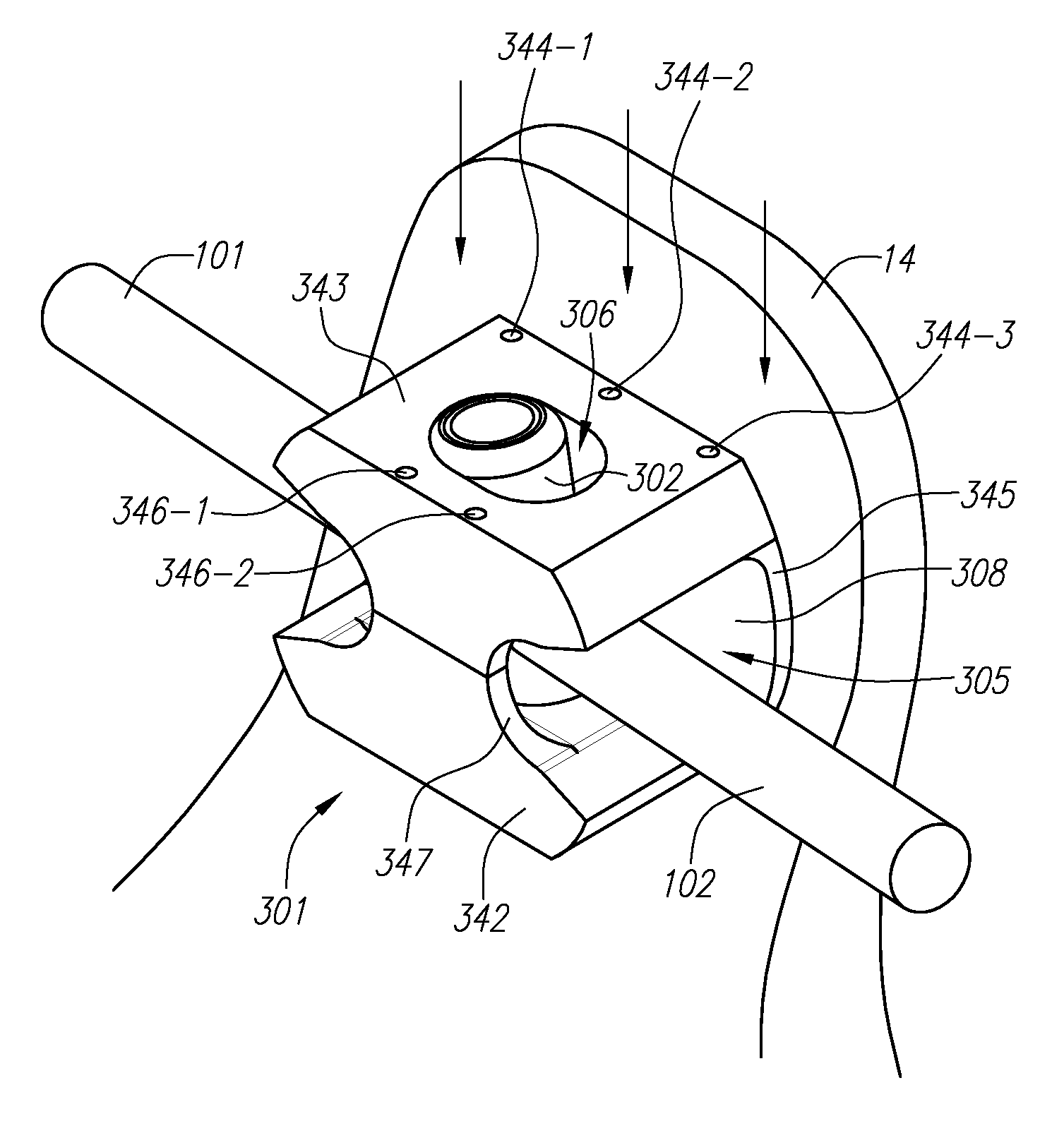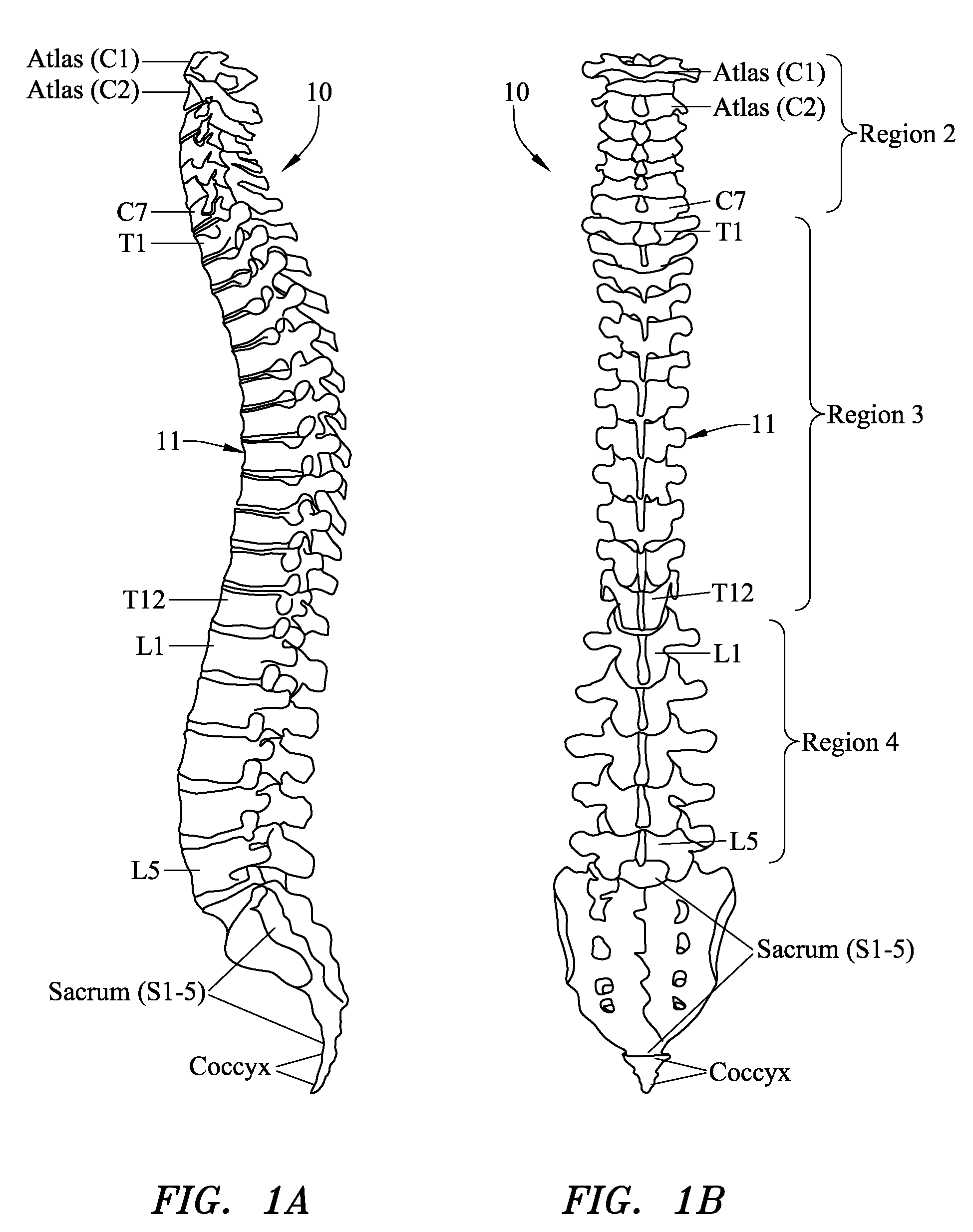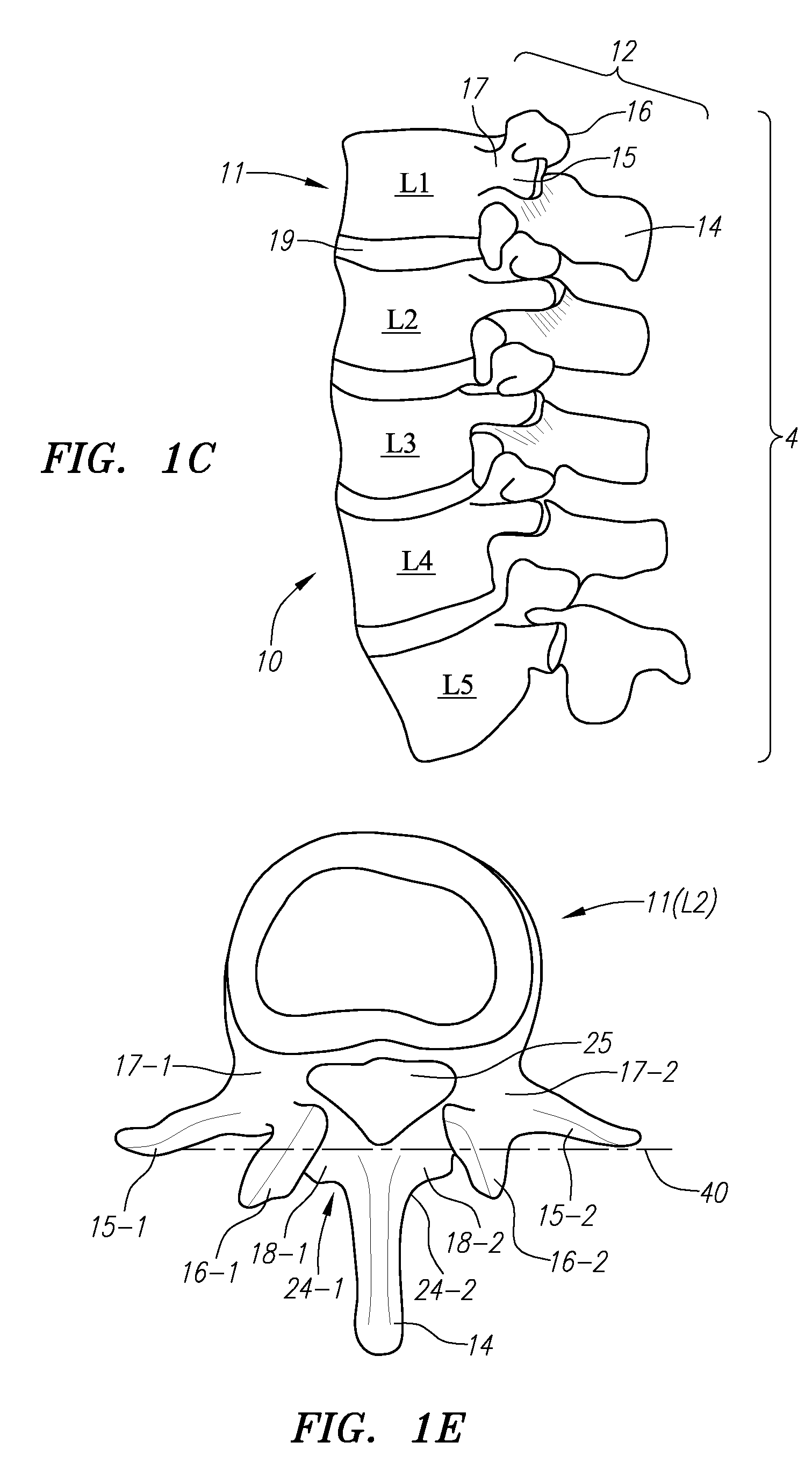Systems, methods and devices for correcting spinal deformities
a spinal deformity and spinal nerve technology, applied in the field of spinal nerve deformity correction, can solve the problems of increased blood loss, increased risk of vertebral body fusion, and significant invasive surgery, and achieves the effects of reducing the risk of fusion
- Summary
- Abstract
- Description
- Claims
- Application Information
AI Technical Summary
Benefits of technology
Problems solved by technology
Method used
Image
Examples
Embodiment Construction
[0078]To facilitate the description of the systems, devices and methods provided herein, a discussion will first be set forth of basic healthy spinal anatomy and deformities that can occur thereto. FIG. 1A is a lateral view of a normal human spinal column 10. Spinal column 10 is divided into three principal regions. The top, or superior, region 2 includes seven vertebral bodies 11 and is referred to as the “cervical” region of the spine. These seven bodies are consecutively labeled C1-C7. The intermediate region 3 includes twelve vertebral bodies 11 and is referred to as the “thoracic” region of the spine. These twelve bodies are consecutively labeled T1-T12. The bottom, or inferior, region 4 includes five vertebral bodies 11 and is referred to as the “lumbar” region. These five bodies are consecutively labeled L1-L5.
[0079]In a general sense, a typical healthy spinal column 10 has curvature in the sagittal plane (depicted in FIG. 1A) but not in the coronal plane (depicted in the pos...
PUM
 Login to View More
Login to View More Abstract
Description
Claims
Application Information
 Login to View More
Login to View More - R&D
- Intellectual Property
- Life Sciences
- Materials
- Tech Scout
- Unparalleled Data Quality
- Higher Quality Content
- 60% Fewer Hallucinations
Browse by: Latest US Patents, China's latest patents, Technical Efficacy Thesaurus, Application Domain, Technology Topic, Popular Technical Reports.
© 2025 PatSnap. All rights reserved.Legal|Privacy policy|Modern Slavery Act Transparency Statement|Sitemap|About US| Contact US: help@patsnap.com



